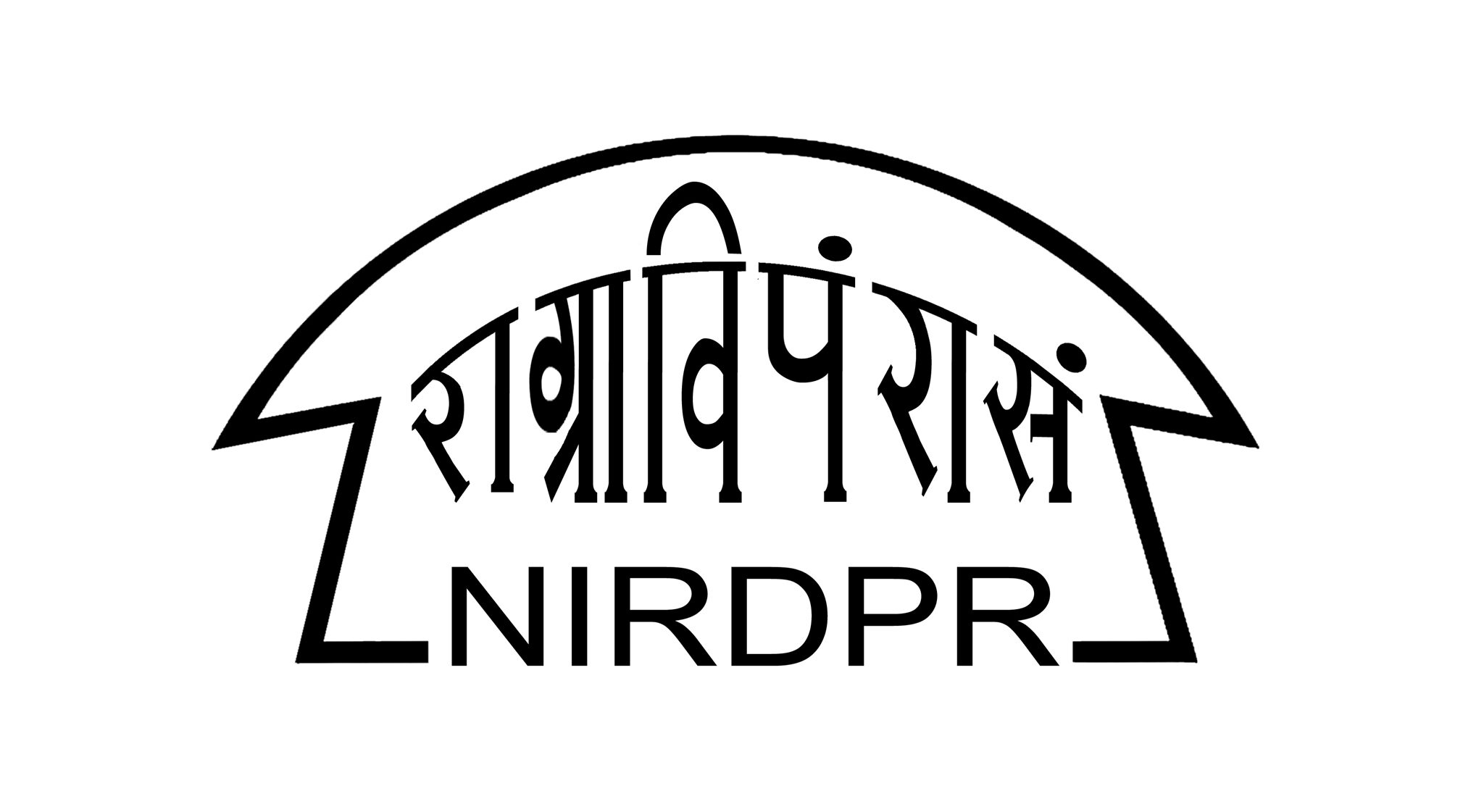
CONTENTS:
COVER STORY:
Between Disaffection & Development: An Inquiry into the Praxis of Development in Areas of Naxalite Influence
NIRDPR Organises Guest Lecture on Biodiversity Finance – Kunming-Montreal Global Biodiversity Framework
Enhancing Panchayat Financial Management: Insights from a Training Programme Conducted in ETC, Rajendranagar, Telangana
CICT Organises Training Programme on FRMS
Integrated Farming System for Sustainable Livelihood: A Case Study of NDDB, Anand
National Workshop on Wetlands Conservation and Livelihoods Promotions: Possibilities under Amrit Dharohar Scheme
CICT Conducts Training Programme on Procurement through GeM Portal
Training Programme on Strategies for Formalisation of the Rural Informal Sector
ToT on Capacity Building Programme on e-GramSwaraj Portal for PRI Functionaries at IMPARD, Jammu
Refresher Training Programme on e-Office for NIRDPR Employees
COVER STORY:
Between Disaffection & Development: An Inquiry into the Praxis of Development in Areas of Naxalite Influence
Dr. Satya Ranjan Mahakul
Assistant Professor, Centre for Equity & Social Development, NIRDPR
msatyaranjan.nird@gov.in
This article is a review of the study undertaken in the Naxalite-influenced States of Chhattisgarh, Jharkhand, Odisha and Maharashtra (2008-11)
By all indicators, the Maoists are being seen as a force to be reckoned with in the forested tracts of the country. They claim to be a revolutionary party committed to a protracted people’s war to capture State power. Some consider them a security threat, who follow an outdated ideology and military strategy that threatens life and disrupts the livelihoods of millions, and suggest stern military solutions to crush them with force. Another section holds that the Maoists have constructed their mass programme on the failure of the administration to uphold the Constitutional provisions aimed at protecting the tribal people and the Dalits from exploitation, promoting their social and economic interests and ushering in equitable development. It is precisely this reason why decades of repression have at best weakened their mass base but has not succeeded in wiping out the Naxalites or their mass fronts. Hence, any strategy to meet the challenge posed by them must include clearly defined steps to recognise and protect the rights of the tribal people and Dalits, curb exploitation, restore their entitlements and administer development with dignity.
This study, therefore, tries to clarify the frame and the theoretical underpinnings by conducting an inquiry, which attempted to look up from the bottom, allowing the local people to formulate and articulate their views and impressions and use the wealth of knowledge generated by the people, living under the gaze of the Naxalites. The terms ‘Naxalites’ and ‘Maoists’ are used interchangeably, as the larger Naxalite factions and parties have merged in the recent past to form the Communist Party of India (Maoist).
A look back into the history of the Naxalites discovers that their own origins, expansion and consolidation are so intertwined with the struggles of the tribal people and the Dalits against exploitation, oppression, deprivation and dissatisfaction and loss of dignity that it is difficult to differentiate between the trajectories of the party and the oppressed. It is also found that relative equality, intra-community cultural homogeneity and histories of resistance of the tribal people, coupled with the harsh terrain and geographical isolation, have influenced the decisions of Maoists to build up a militant tribal base to launch struggles against exploitation, oppression and exclusion. The Maoists have taught the tribal people that armed confrontation and conflict in response to disaffection is an act of assertion, power and affirmation of one’s dignity, “izzat ki ladai”. The Naxalites have also formed “Janata Sarkar” as local self-governing institutions that manage the community, resolve disputes and direct development as well as build the party. It is, however, necessary to keep in mind that the Naxalites use the militant struggles of the people as a means to create and wield widespread loyalty of the oppressed in furtherance of their goal of overthrowing the State through armed struggle. The concept behind the Janata Sarkar, which has proved very useful for the Maoists, was envisaged in PESA Act that aimed at building, strengthening and sustaining traditional institutions of self-governance and participatory democratic development. Unfortunately, the law has been sidelined for twenty-seven years to our own peril, as history already says.
The author also tried to take a closer look at the official statistical data on a number of development indicators, like education (school admissions, retention and dropouts, impact on academic advancement of the STs), health (infant mortality and morbidity, hunger and malnutrition, maternal mortalities, etc.), issues integrally linked to development like recognition of land rights, tribal land alienation, restoration of lands and distribution of surplus lands, and on the flip side, eviction from forest cultivation and Jhum lands. A rapid scan of the trajectory of development of the STs post-independence, the monies dedicated to tribal development and their impact, and the efficaciousness of the tribal sub-plan and its impact on poverty removal revealed that despite the enormous financial outlays and money spent on the development of tribal people over half a century, the fundamental issues of security of land, resources and livelihoods have not been given adequate care. The same result is seen in the case of repeated admonitions to continue the programme of elimination of exploitation and oppression made by numerous commissions and committees appointed to review the conditions of the tribal welfare. Notwithstanding the official concern for the welfare of the tribal people, the conclusion appears to be unwelcome as the conditions prevailing in a large part of the tribal tracts are conducive for Naxalite consolidation, particularly where the reach of welfare and development administration has been very tardy, to say the least.
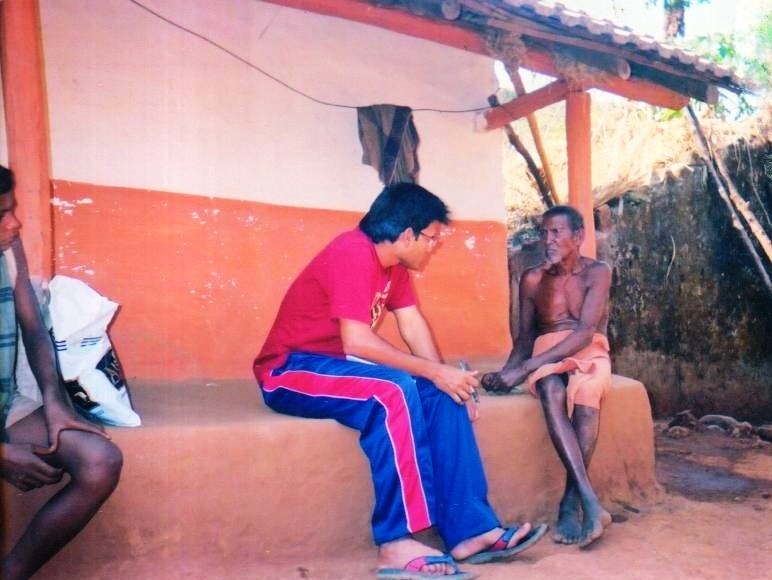
To understand the ground realities, the author analysed the development of 64 sample villages in four States and studied empirical data gathered by the people themselves. The data collected from the field studies shows that geographical isolation, harsh terrain, exiguous infrastructure, unfavourable topography for agriculture, underdeveloped agriculture, lack of land reforms, iniquitous socio-political and economic relations between the tribal people and settlers, physical and economic exploitation, artificially depressed wages, low support for educational advancement, poor employment opportunities, and growing lack of access to resources are prevalent in most of the villages. Once again, regardless of the public declarations of concern and commitment of successive governments in the Centre and States, the conditions prevailing in the tribal areas significantly contribute to the growth and spread of violent ideologies.
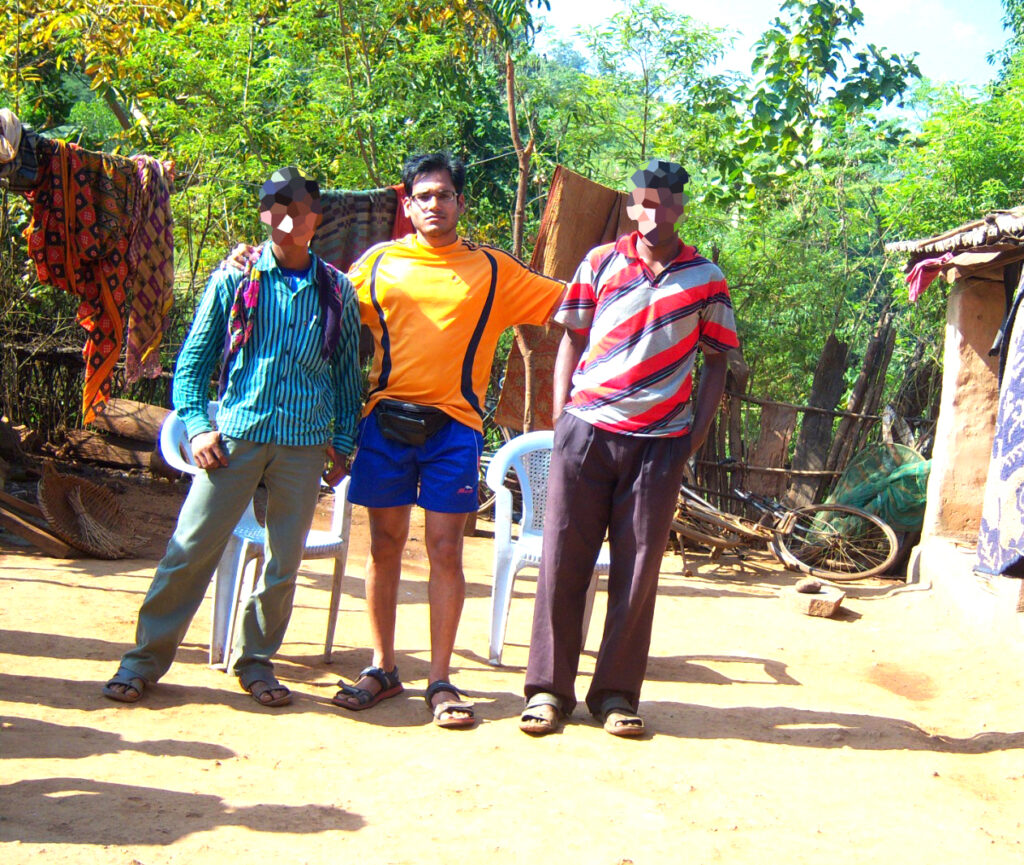
When the reasons for the villagers striking association with the Naxalites are examined, it was clear that denial of rights over forest and forest land, distress over administrative failure and delinquency and dissatisfaction over the failure of development are fairly widespread. Both alienation of rights over land and forest resources, deprivation of the fruits of development, inefficacious legal and juridical institutions and a heightened sense of powerlessness before an unconcerned or inefficacious administration are repeatedly being used by the Maoists to foment dissatisfaction and militancy. In all areas, the issues taken up by the Maoists are directly related to oppressive exploitation, stupid deprivations and devastating indignities. The people’s responses about the success of Maoist intervention, though how long such a state of affairs will continue, remain unclear. Unfortunately and painfully, very limited and dispersed evidence of suitable and effective operational measures and administrative interventions to tackle the causes of dissatisfaction is available. The commitment called from the State machinery to meet the challenges in the areas where the Maoists have set their feet will remain of a very different order and dimension than we have been used to until now. Much depends on the political will of the governments and the administrative determination of the executive.
The first likely conclusion of the inquiry is that the critical opportunities for Maoist intervention in the tribal and Dalit areas come from i) denial of rights, particularly to forests, forest land and forest produce and the attendant oppression, ii) administrative failure to protect tribal rights in land and from exploitation and oppression iii) a strong feeling of powerlessness and loss of faith in state authorities, and iv) a growing sense of exclusion from basic welfare entitlements, opportunities of advancement and development interventions due to administrative delinquency and delay.
It is imperative that we take into consideration a) ground realities b) the range of conflict in aspirations of the local people and the response of the welfare and development administration, c) the subjectivities of people and their experiences of the authorities, d) the legal and developmental options available at the present, and finally e) the changes that are necessary for policy and praxis of the welfare and development administration. It is a firm belief that though the sense of exclusion from opportunities for advancement and development interventions is low in the list of critical areas of opportunity for the Maoists, a carefully evolved, convergent and consistent development thrust in areas on the periphery of Maoist influence and moving from the periphery to the centre after consolidating one’s work will be the most important contribution of the present Ministry to the future of the tribal people and Dalit communities. We attempt at this stage to identify the critical remedial interventions that are necessary for the immediate future and some long-term solutions.
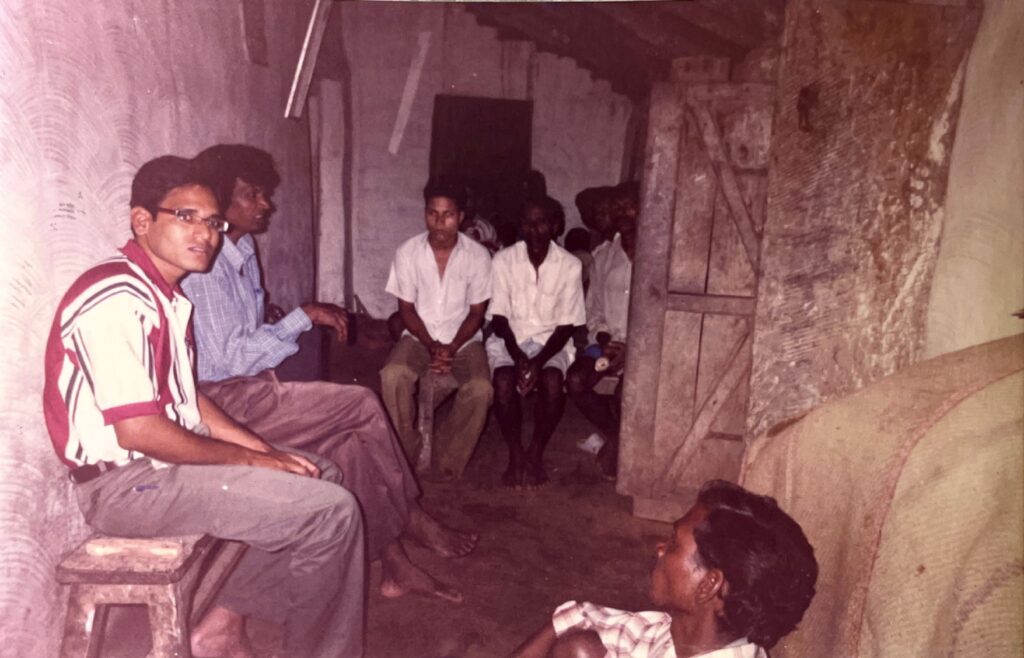
The first critical and perhaps the most important intervention is to operationalise the PESA Act and make it the engine of participatory democracy and equitable development in all tribal areas. This will require that the frame of participatory democracy and local self-government, with actual powers to the village-level institutions to address their issues effectively put in place as mentioned by the Panchayats (Extension to the Scheduled Areas) (PESA) Act. In other words, the State governments will have to be persuaded, and gently intimidated if necessary, to confer the tribal people’s autonomy in accordance with the provisions of PESA and to ensure their efficacious empowerment, both by law and practice, care, conserve and sustainably use their common property resources like forests, manage their affairs, resolve their disputes, execute development with devolved resources, take remedial action on the numerous forms of exploitation, including land alienation and money lending, and do it all without having to depend on the Naxalites or the Maoists, or even for that matter, the State.
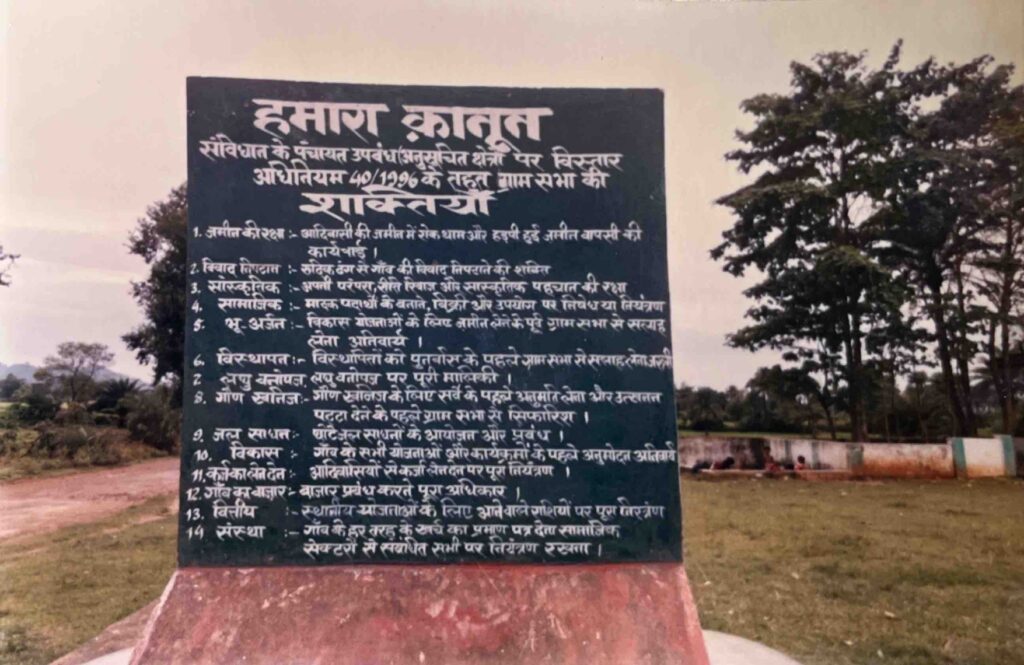
The rules made in conformity with PESA must ensure that i) prior approval of all plans, programmes and projects from the respective Gram Sabha, ii) identification and selection of beneficiaries, and iii) certification of all expenditures by Gram Sabhas are made an obligatory enforceable requirement of all development works. Effective operationalisation of PESA calls for a change in the approach to planning to give community advancement its rightful place. The development process should address individual aspirations through the instrumentality of community development and emancipation since, unlike other communities, the tribal people still retain a large measure of community life. In the absence of the focus on the community as the hub of development, only a thin upper crust among tribal people has availed of developmental and reservation benefits negating the requirements of the elaborate constitutional-legal frame put in place as an independent nation.
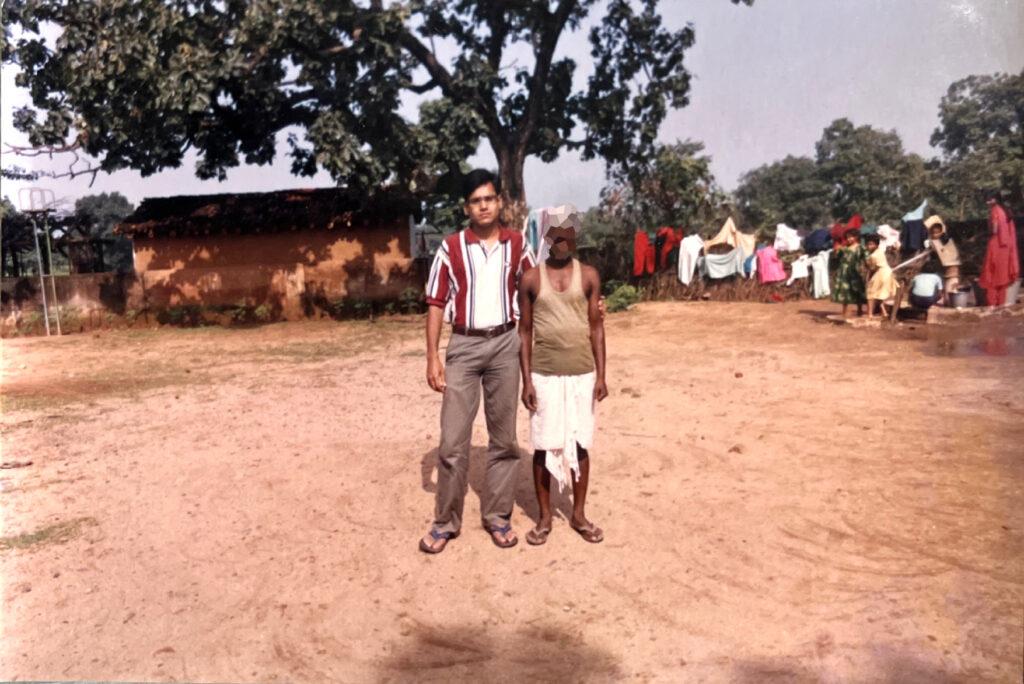
PESA can pave the way for a growing sense of democratic power among the people and sustain a real “Izzat ki Ladai” – the right to live and develop with dignity. It is an undeniable fact that strong communities alone can resist the attraction of the Maoists, as has taken place in parts of tribal Maharashtra and Jharkhand. But the government must trust its people and build their capacities to act in their own best interests. In accordance with the requirements of PESA, all other laws should be brought in conformity, amended or repealed, development functionaries need to be trained, Panchayati Raj Institutions in the tribal areas have to be sensitised and the development administration has to be disciplined. But, there is no alternative.
Unfortunately, State governments have been extremely reluctant to implement the law and PESA remains a dead letter to date. This failure of the democratically elected governments in empowering the tribal people to govern them democratically and deciding on the path of their development is probably the strongest reason that enabled the Maoists to build up strong bases among the tribal people using precisely the principles enshrined in PESA.

The second critical intervention is the implementation of land reforms in letter and spirit in a campaign mode as is being envisaged in the Scheduled Tribes and Other Traditional Forest Dwellers (Recognition of Forest Rights) Act, 2006. This will entail a commitment of the revenue administration to undertake an immediate and time-bound enjoyment survey of all land under cultivation, culminating in the grant of title to those who are enjoying usufruct for a long sans title, identification of alienated land and restoration of these lands through Gram Sabhas as provided in PESA and an analogous manner in non-Scheduled tribal areas. The protective shield should be extended to Scheduled Castes and Scheduled Tribes beyond the Scheduled Areas, as recommended by various Commissions and put in place in parts in Rajasthan, Odisha and M.P. In this land reform process, recognition of community control over traditional Jhum/Podu areas must be established. The tribals should be exposed to programmes of tree culture and husbandry as a step towards the self-sufficient and sustainable use of resources.

The National Rural Employment Guarantee Scheme must be linked to the Intensive Development of Agriculture and allied sectors and bring the entire rain-fed and dry farming area under Participatory Watershed Development Projects, using the work guarantee as a mechanism for suitable changes in the cropping pattern and strengthen subsidiary and supportive activities in animal husbandry, fisheries, horticulture, sericulture and poultry. As a supportive mechanism to link NREGS with the efforts to ensure long-term livelihood security, the State governments must direct their energies to the establishment of quality infrastructure, supportive technical services and efficient market linkages at the level of a village or a cluster of villages and strengthen all sub-systems essential for intensive agriculture and allied sectors for selected young tribal farmers, especially women.
The third critical intervention is to build a strong foundation by ensuring livelihood security and natural resource renewal through the National Rural Employment Guarantee Scheme. This must provide full livelihood security through guaranteed wage employment in keeping with the spirit of the Act. The focus of work planning should be developing livelihood resources, community resources and other productive assets to their full potential, to be owned by the poor, or over which the vulnerable groups like primitive tribes, landless and labouring classes will enjoy usufructuary rights. The guarantee must be rooted in the identification of resource depleted and areas of high migration and malnutrition for saturation as the top priority. The norms for manual work must be in the interests of the worker and not the contractor and ensure that workers, especially women, are entitled to minimum wages.
The fourth critical intervention lies in operationalising a secure protective shield of the State against the exploitation of the poor and the vulnerable through alienation of their land, moneylending and marketing. All debt liabilities of members of the SCs and STs must be liquidated where the debtor has paid double the principal amount and the intended benefit for which the loan was advanced did not accrue to the debtor. The onus of establishing accrual of such benefit will be on the lending agency, and the process has to be completed within three months of issuing the notification.
The intervention will also include the revival and restructuring of the Large Area Multi-purpose Cooperative Societies (LAMPS), placing them under the control of community institutions, with the specific target of providing all credit needs of the SCs and STs. The intervention includes effective support prices for all items of agriculture and minor forest produce without deduction of royalty, while respective State governments must bear transportation and handling charges. Finally and most importantly, the elimination of exploitation calls for an effective public distribution system, a food security support system of buffer stock with local produce and supplementing it from outside only to the extent of deficiency under the efficacious supervision of the Gram Sabha.
The fifth critical intervention lies in reforming and reinforcing an effective welfare and development administration and planning through a simple single-line administration incorporating dynamic coordination and decision-making at the district/project level, evading the district-level administrative, technical and finance clearance, together with a responsive grievance redressal system. It will also require raising the level of administration through the creation of necessary infrastructure, service conditions, facilities and a strict code of conduct for all personnel working in these areas. Keeping the objective of bridging the gap in socio-economic conditions of SCs & STs with the rest of the population by the end of the 11th Five Year Plan as an achievable goal, special Component Plans for SCs and Tribal-Plans Tribes must be prepared as an integral part of the State Plans and financial provisions need to be made non-divertible and non-lapsable.
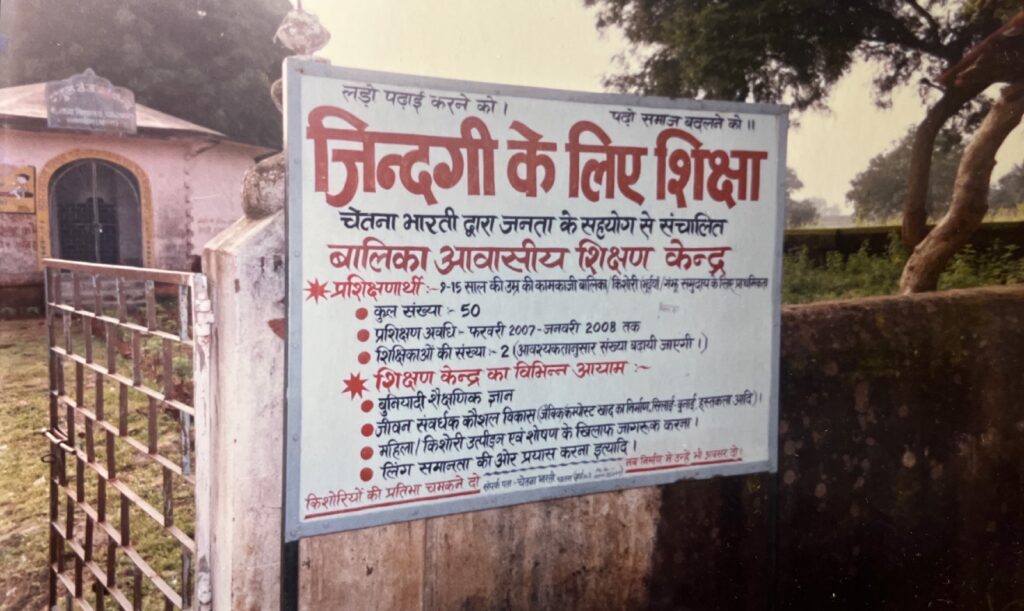
The sixth critical intervention lies in universalising elementary, strengthening secondary and vocational education and public primary health care and nutrition. The endeavour requires every child to be in a recognised school and completion of at least eight years of schooling. It calls for providing qualified and trained teachers and adequate and attractive school infrastructure for every school as per national norms. The health intervention will begin by providing accredited functioning health facilities as per national norms, namely one Health Sub Centre for 3000 souls in hilly/tribal districts, one Primary Health Centre for 20,000 population in hilly/tribal districts and Community Health Centres for curative and referral services for every 1,00,000 population. All sanctioned posts need to be mandatorily filled in by trained professionals/paraprofessionals regularly. If necessary, the problem of the chronic shortage of staff has to be addressed through the provision of special allowances and local recruitment for universal immunisation, guaranteed safe deliveries, treatment of communicable diseases together with the supply of essential drugs, up to health Sub Centre level with full utilisation for untied funds. The intervention will focus on an identifiable efficacious nutrition chain for pregnant women, nursing mothers, malnourished children and all school-going children. The school and teachers, health centre and health functionaries must be brought under the effective control of the Gram Sabha in line with the effort underway in Nagaland to implement the Communitisation Act.
The seventh critical intervention lies in providing a trained and empowered male development activist and female accredited social health activist from the local tribe in every village or large habitation chosen by and accountable to Gram Sabha to function as an interface between the community and the welfare and development system.
And finally, the long-term solution must be appropriate amendments to laws like the Land Acquisition Act of 1894, the Forest Act of 1927, the Forest (Conservation) Act of 1980, procedures of reservation of forests, the Coal Bearing Areas (Acquisition and Development) Act of 1957, and the National Mineral Policy of 1993 by eliminating iniquitous and undemocratic provisions. Despite the unequivocal direction contained in Section 5 of the Act, little or nothing has been done to remove the inconsistencies between PESA and the other relevant laws, rules, etc. Examples of those which call for reconciliation are the Land Acquisition Act of 1894, Coal Bearing Areas (Acquisition and Development) Act of 1957, National Mineral Policy of 1993, States’ Mineral Concessions Rules, States’ Excise Acts, States’ Irrigation Acts, Land Revenue Codes, Land Alienation laws and regulations, Money-lending laws, and Regulated Markets laws and rules. All relevant instruments need to be harmonised with PESA within one year from the date on which the Act became effective.
The past is lost, the present is slipping away, and the future beckons. The eternal question is whether we are committed to making that future real and guaranteeing the right to development with dignity for the tribal people, who have opted to take up arms precisely for the same cause because the State that is charged with the responsibility was found wanting its duty. The challenge is to make development and dignity flow from the channel of democracy or else it will be forced through the barrel of a gun.
NIRDPR Organises Guest Lecture on Biodiversity Finance – Kunming-Montreal Global Biodiversity Framework
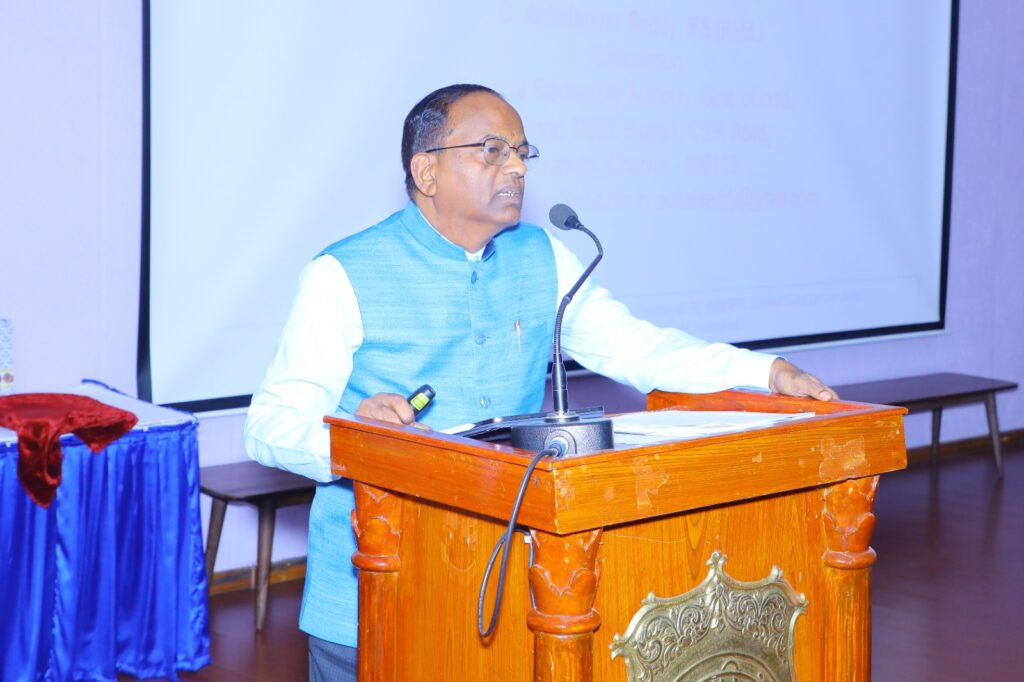
The National Institute of Rural Development and Panchayati Raj (NIRDPR), as part of the World Environment Day Celebrations and Mission LiFE (Lifestyle for Environment) initiative of the Government of India, organised a Guest Lecture on ‘Biodiversity Finance – Kunming-Montreal Global Biodiversity Framework’ on 25th May 2023 at the Institute. Shri C. Achalender Reddy, IFS (Retd.), Chairperson, National Biodiversity Authority (NBA), Government of India, an expert on this subject and an eminent speaker, delivered this lecture.
Biodiversity finance is the practice of raising capital and managing funds for biodiversity conservation. It comes under the umbrella topic of conservation finance, which aims to financially support the conservation of land, water, and other natural resources in a sustained manner. Biodiversity finance, to a large extent, is dependent on funds from governmental agencies and private philanthropies. Biodiversity finance is growing in value and sophistication. Of late, the focus of biodiversity finance is shifting towards sourcing finances across a variety of funding sources (from public, private, and non-profits), types of funding (through loans, grants, tax incentives, market mechanisms, etc.) and scale of funding (local, state, national). These include finance mechanisms such as tourism-related taxes/fees, debt-for-nature swaps, conservation trust funds, and payments for environmental services. However, all of this has not yet resulted in a major shift or boom in financial flows towards biodiversity.
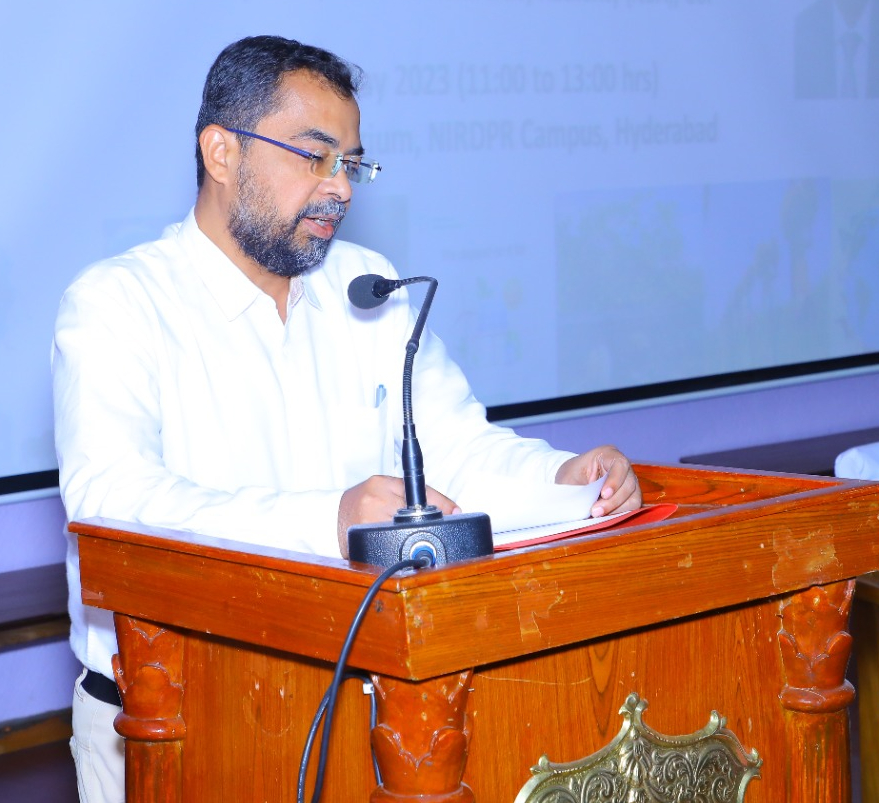
Shri Achalender Reddy explained the concept of ‘Biodiversity Finance’ which is the practice of raising capital and managing funds for biodiversity conservation. Citing examples, the speaker narrated how the focus of biodiversity finance is shifting towards sourcing finances across a variety of funding sources from public, private and non-profits. While giving the global scenario on the topic, he said that biodiversity finance, as a global initiative, is being piloted by the United Nations Development Programme (UNDP).
“UNDP runs the Biodiversity Finance Initiative (BIOFIN), which works with 41 countries across the globe to create sustainable financial solutions that can not only protect biodiversity but will also let it flourish. In India, BIOFIN is led by the Ministry of Environment, Forest and Climate Change (MoEFCC) and hosted by the National Biodiversity Authority (NBA) working with the State Biodiversity Boards (SBBs) of Telangana, Uttar Pradesh and Maharashtra. India’s Biodiversity Finance Plan suggested 12 potential finance solutions to bridge the finance gap taking into account all existing financial instruments. Finance is critical to implement the entire CBD Kunming-Montreal Biodiversity Framework (GBF), including its 23 targets and four goals,” he said.
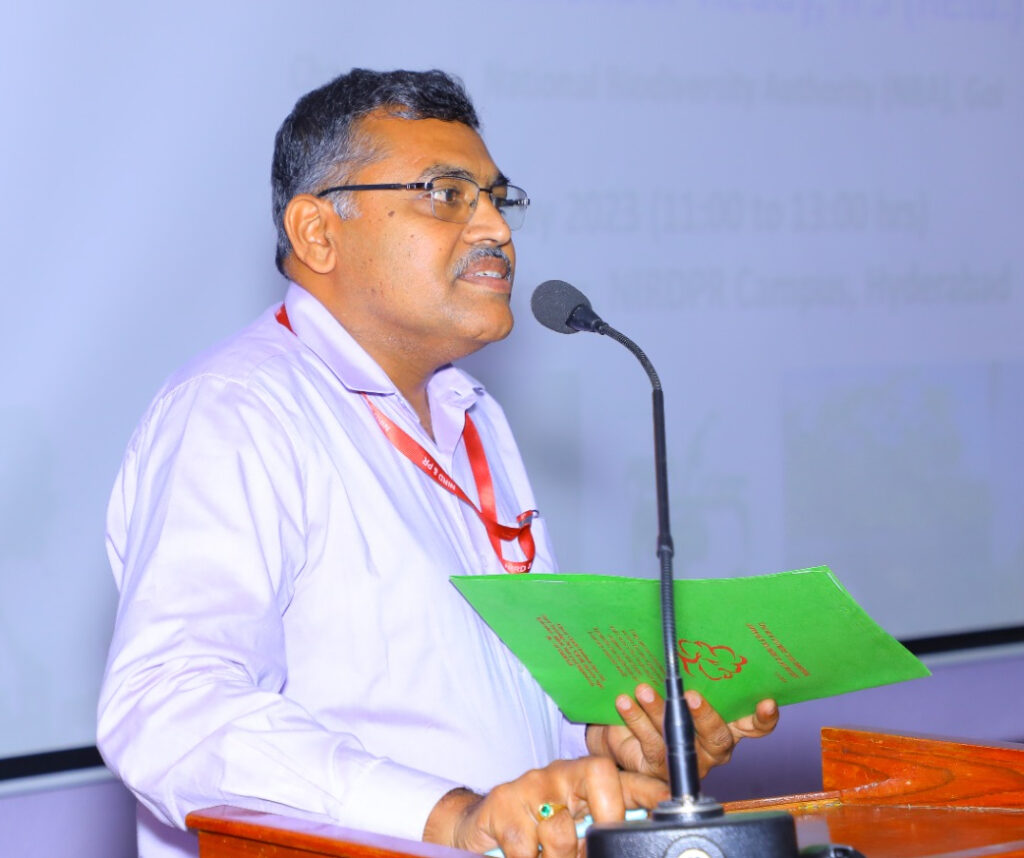
Earlier, while delivering the welcome address, Professor Ravindra S. Gavali, Head of Centre for Natural Resource Management, NIRDPR spoke about the Mission LiFE (Lifestyle for Environment) initiative of Government of India, its relevance to biodiversity conservation and the importance of Biodiversity Management Committees at the Panchayat level.
Dr. Kathiresan, Associate Professor & Head of Centre for Research & Training Coordination & Networking (CRTCN), also spoke during this occasion. This lecture was attended by faculty, students, research scholars and participants of training programmes.
Enhancing Panchayat Financial Management: Insights from a Training Programme Conducted in ETC, Rajendranagar, Telangana
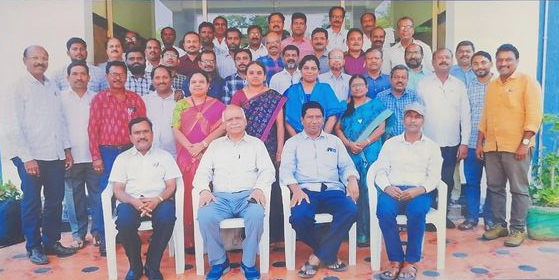
Introduction
The effective administration and management of Panchayats play a crucial role in local governance. For delivering public services, the Panchayats spend a huge amount of money which is mostly received from taxes and grant-in-aid. The elected bodies and the officials who hold the offices of Panchayats have the discretion to use these public funds and are answerable to the people for the outcomes of their actions and decisions. These elected bodies are regarded as trustees by the public, and nothing inspires confidence in the proper functioning of these institutions more than prompt and accurate accounting. Therefore, to ensure the smooth functioning of Panchayats, administrative support and financial management are essential. Financial management encompasses planning, recording, analysing, and optimising the utilisation of resources. In May 2023, a three-day training programme was conducted by the Centre for Panchayati Raj, Decentralised Planning & Social Science Delivery (CPRDPSSD), NIRDPR, at the Extension Training Centre in Rajendranagar, Hyderabad, Telangana for the Superintendents and Accountants of Mandal Praja Parishads (MPP) of Yadadri Bhongir District. The programme aimed to develop their capacities in Panchayat financial management.
Objectives of the Training Programme
- Understanding the financial aspects and revenue sources of Panchayats.
- Emphasising the significance of local revenue generation to strengthen Panchayat finances.
- Exploring the budgeting process and content of Panchayat budgets.
- Learning about the execution and control of budgets in Panchayats.
- Understanding the structure and coding of accounting systems in Panchayats.
- Exploring the auditing process in Panchayats including the use of online auditing.
- Highlighting the role of Panchayats in localising Sustainable Development Goals (SDGs) through participatory planning.
Training Programme Overview
The training programme commenced with an inaugural session where the participants were welcomed, and the importance of financial management in Panchayats was emphasised. Most of the sessions were taken by Mr. Mohd Taqiuddin, Consultant along with Dr. A. K. Bhanja, Associate Professor, NIRDPR, and covered various aspects of Panchayat financial management.
- Panchayat Finances: The session emphasised the need for a strong financial base for Panchayats, including own source revenues, State Finance Commission Grants, and Central Finance Commission Grants. The power to impose taxes by Gram Panchayats was highlighted as imperative for revenue generation.
- Panchayat Budgeting: The process of preparing a Panchayat budget was discussed, involving estimating available revenue, identifying expenditure requirements, prioritizing expenditures, allocating funds, presenting the budget, and obtaining approval from the General body of the MPP.
- Panchayat Accounting: This session focused on recording financial transactions, classifying and codifying transactions, maintaining accurate records, preparing financial statements, and ensuring transparency in accounting and financial management.
- Panchayat Auditing: The importance of auditing in Panchayats was highlighted. The session covered planning the audit, conducting the audit using online auditing, reporting findings, and ensuring follow-up action on audit recommendations.
- Local Planning and SDGs: The role of Panchayats in localising SDGs was presented, including the responsibility to utilise Panchayat funds for SDG achievement. The expert committee’s recommended thematic areas, local targets, and indicators for SDGs were discussed.
- Execution of Works: The session explained the procedure for executing works in Panchayats, including administrative and technical sanction, tendering, finalisation of works, measurement and payment procedures, and deductions made from work bills.
- Right to Information Act: The features and significance of the Right to Information (RTI) Act were covered, highlighting its role in promoting transparency, accountability, and citizen empowerment.
Expected Outcomes of the Training Programme
The three-day training programme on Panchayat Financial Management provided valuable insights and knowledge to the Superintendents and Accountants for effective financial management in Panchayats, including the preparation of Annual Accounts as per the Model Accounting System prescribed by the Ministry of Panchayati Raj. The participants gained a comprehensive understanding of the financial management principles and practices relevant to Panchayats. They also learnt about administrative and technical sanctions, tendering processes, measurement and payment procedures, and various deductions made from work bills. This will enhance their ability to execute works efficiently and manage financial aspects related to infrastructure development. They are now equipped with knowledge of thematic approaches to planning, local targets, and indicators, enabling them to align Panchayat Development Plans with the SDGs. Overall, this training program will contribute to the efficient and transparent functioning of Panchayats, promoting good governance and sustainable development at the grassroots level.
Dr. Anjan Kumar Bhanja, Associate Professor and Head, CPRDPSSD, NIRDPR, coordinated this training programme.
CICT Organises Training Programme on FRMS
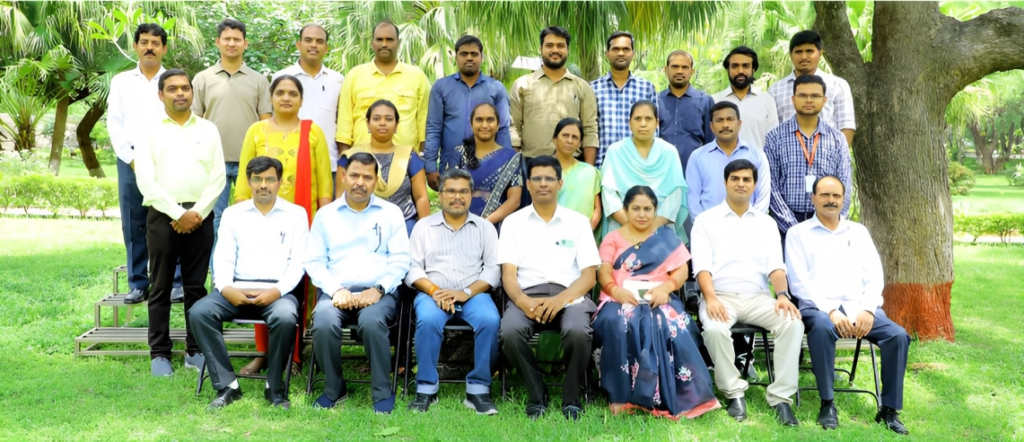
In today’s fast-paced business environment, managing financial records efficiently is critical to the success of any organisation. The Finance section plays a crucial role in maintaining accurate and up-to-date financial records. To support their efforts, the Centre for Information and Communication Technology (CICT), NIRDPR organised a one-day training programme on Financial Record Management System (FRMS) on 3rd May 2023.
The training programme aimed to equip the Finance section officials with the knowledge and skills required to manage financial records effectively in FRMS, enhance their understanding of the Financial Record Management System, improve their knowledge of the importance of accurate and real-time record processing, and develop their skills to manage financial records efficiently.
The topics covered included Introduction to Financial Record Management System, Creation of Record, Acknowledge/Forward of Records, Assignment of Records to Concerned DA by AO for processing of Records, Disposal of record by DA and revert to AO, De-Activation of User, Closing of Records by AO, Multi-level Reports for monitoring and MIS and Group Exercises on Test Instance of FRMS. The training programme was designed to be interactive, with group exercises that allowed participants to apply the concepts they learned in real-world scenarios. The sessions were led by experienced trainers and experts in FRMS.

The training programme offered an opportunity for Finance section officials to enhance their knowledge and skills in managing financial records and equipped them with the necessary tools and techniques to ensure accurate and timely record keeping, which are essential to the financial health and success of any organisation.
Course Directors Shri Sunil Kumar Jha, Data Processing Assistant, CICT and Shri G. Praveen, Data Processing Assistant, CICT coordinated the training under the mentorship of Dr. M. V. Ravibabu, Associate Professor & Head (i/c), CICT.
Integrated Farming System for Sustainable Livelihood: A Case Study of NDDB, Anand
Ms. Anushka Dwivedi
Student, Batch- 5 PGDM- RM, NIRDPR
An integrated farming system (IFS) is a sustainable agricultural system that integrates agriculture with other components, such as livestock, fishery, piggery, agroforestry, and poultry together so that all activities are interlinked and mutually supported. IFS runs on the main concept that nothing is wasted as one activity is linked to another; the waste of one activity becomes the input of another, thereby cutting down the cost of cultivation.
Integrated farming systems have been proposed as a solution to the challenges faced by small-scale farmers. It involves the integration of different agricultural practices, such as crop cultivation, livestock rearing, and aquaculture, in a single farming system. This approach can concomitantly increase productivity and reduce risks and environmental degradation.
An IFS is particularly effective in small-scale farming systems, where it can help to maximise the use of limited resources. Farmers have shown a growing interest in the implementation of IFS in small-scale farming systems in recent years given the possibility of bettering livelihoods and promoting sustainable development. Nevertheless, there is little research on developing IFS on a small area, for instance, two acres. Therefore, it is crucial to investigate the viability and advantages of establishing IFS on a small landholding.
The goals of IFS include
- Enhancing livelihood security of farmers.
- Enhancing Productivity
- Efficiency of Resources
- Increases Profitability
- Diversification & Risk Reduction
- Proper Waste Management
- Sustainable Environment
A Case of Two-acre IFS at NDDB, Anand
With the objectives of livelihood, nutritional security, and farm schools, the National Dairy Development Board (NDDB) in Anand, Gujarat has taken the initiative to create an integrated farming system model on two acres in Itola village of Vadodara district. Itola is situated in a semi-arid region having heavy black soil that creates challenges in drainage and crop cultivation. The annual rainfall in the region is 700-800 mm.
The author did a case study on the smallholder-based integrated farming system setup by NDDB to find out how IFS can be monitored in terms of expenditure and income. As per the agreement, the farmer will keep all the income generated from IFS whereas NDDB will provide the guidance. Farmers cannot raise any claim on the land or the investment for the establishment of IFS.
The components taken in IFS consist of agriculture, horticulture, poultry, duckery, fishery, kitchen garden, dairy, biogas, and goat rearing. All nine components are interlinked to each other so that output from a unit may be used as input in other units. For dairy purposes, they are rearing taken two cows of HF (Holstein Friesian) breed and a Gir cow, three goats (a male and two females) belonging to the Surti breed, Kadaknath chicken breed, sorghum fodder, vegetables like okra and brinjal that fetches good profit, and rohu & catla for pisciculture and horticultural plants like ber, papaya, sapota, lemon, karonda (as natural fence), roses and other ornamental varieties.
There is a flexi biogas plant of two cubic metre volume which works on 50 kg of cow dung and 50 litres of water per day to generate an ample amount of biogas, which can be used as cooking fuel for the farmer’s family by replacing LPG. The zone has a hatching machine for eggs, a residential area for farmers and a storage container for all the used inventories for different activities. One of the best practices they adopted is using drip irrigation in the agricultural field to use minimum water to get good output. They are planning to start Azolla pits to provide a nutritional diet to cattle and poultry birds and are also making a vermicompost pit. Accordingly, all these activities will be interconnected, thus bringing down the operational cost.
Interlinked Activities
- Poultry litter is used as feed for the fish inside the pond.
- Cows are fed with green fodder from agricultural land and cow dung is used in the biogas plant. The slurry is used as an organic manure for agricultural and horticultural activities.
- Biogas is used to replace LPG to save farmers’ income.
Management Practices
- Maintain hygiene of cows and goats
- Maintain proper health and vaccination and artificial insemination at the appropriate time
- Crop planning before each season as per the soil conditions
- Training & pruning of horticultural plants at regular intervals
- Monitoring the mortality rate of chicks and administering medication
- Cleaning the pond, checking Biological Oxygen Demand (BOD) & pH levels at regular intervals, and keeping a tab on fish mortality.

Figure 1: Diagram of interlinked activities in an integrated farming system
Figure 1 depicts how all the activities are interlinked with each other in the IFS. As we can see from the figure, the litter from the poultry unit falls into the pond which acts as feed for the fish, Sorghum fodder is being used as the feed for the cows and goats and cow dung will be used to generate biogas. The slurry will be used as manure in the agricultural field and horticultural plants to get the maximum productivity or yield.
Livelihood & Income Generation
An integrated farming system can create a sustainable livelihood for the farmers and generate income for the whole year. Farmers need not depend only on agriculture, rather they can earn from dairy, poultry, fishery, etc. By selling milk, farmers can generate constant income every month. The sale of fish fetches them a good income once in six months. The sale of eggs, high-cost Kadaknath chicken meat, papaya, lemon, ber, and millet will help them make seasonal earnings. The farmers need not have to search for employment as they can make earnings from the farm itself.
Challenges
Farmers may face many challenges as managing the activities within the IFS is a hectic task. They have to finish tasks on time to get the maximum output. The main issues faced are
- Poultry: High mortality and dwindling population
- Dairy: Improper feeding & unsuccessful artificial insemination.
- Agriculture: Delayed harvest, excessive weed growth, improper drainage channels.
- Horticulture: Harvesting delayed.
Overcoming Challenges
- For mortality in poultry, they have given proper medication by consulting veterinarians.
- By giving an equal quantity of concentrated feed and mineral mixture to cows and goats, timely vaccination, and artificial insemination during the heat period.
- The black heavy soil holds moisture for a long time, which delays the harvesting. Besides using a proper drainage system, they are using drip irrigation to remove excess water from the soil. To reduce weed growth, they are planning to use mulch sheets.
- Harvesting should be done at the appropriate time; farmers should be aware of the harvest stage to get better income from the horticultural & agricultural produce.
Major Learning
An integrated farming system requires fair management practices and farmers need to focus on monitoring and detecting problems related to various activities. Every activity, such as irrigation and manure application at regular intervals, paying attention to the chick’s mortality and solutions, proper feed, mineral and dairy mixture for cattle and goats, upkeep of biogas plant, and maintenance of hygiene, requires a different procedure and management. The IFS model maintains sustainable cash flow throughout the year, ensuring livelihood security for the farmers. Monitoring of the IFS helps to know the unit which delivers maximum profit using fewer resources. So, a dashboard may be designed to collect data on a daily basis using Google form which is linked with a QR code to facilitate easy filling by farmers. The author made weekly and monthly summaries to check progress, lagging areas and those needing further improvement.
Replication of IFS
This integrated farming system launched on two acres on an experimental basis demonstrates a sustainable livelihood and income generation model for small and marginal farmers. In the next stage, it can be developed into a farm school where farmers can be trained. The possibilities of making it an agro-tourism venture also exist, adding an extra avenue for income generation. Given these prospects, the establishment of more IFS models can help the farmers to improve their living conditions as it offers them multiple livelihood alternatives to depend on.
(This write-up is drawn from a report of a 56-day organisational internship completed at the National Dairy Development Board, Anand, Gujarat as a part of the course curriculum. The author is grateful to Shri Niranjan Karade of NDDB and Dr C. Kathiresan, Associate Professor, NIRDPR, for mentoring and supervision).
National Workshop on Wetlands Conservation and Livelihoods Promotions: Possibilities under Amrit Dharohar Scheme
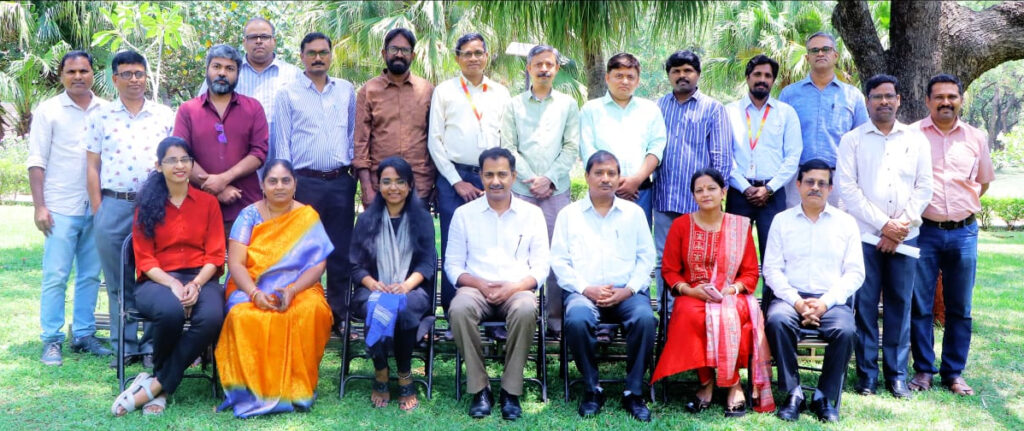
The National Institute of Rural Development and Panchayati Raj organised a national workshop on ‘Wetlands Conservation and Livelihood Promotions: Possibilities under Amrit Dharohar Scheme’ on 19th May 2023 at the Institute. The participants were from academia, State Rural Development departments, State Wetland Authority, and global non-profit organisations.
The workshop was coordinated by Dr. Jyothis Sathyapalan, Professor, CNRN,CC&DM, NIRDPR. He welcomed the participants and set the context for this workshop through a presentation that focused on the material, non-material functions of wetlands and the ecosystem services that arise from them which have the potential to contribute towards direct and indirect livelihoods. He further explained the components of Amrit Dharohar scheme and the Mangrove Initiatives for Shoreline Habitats & Tangible Incomes (MISHTI) programme unveiled by the Finance Ministry, calling for a convergence between MGNREGS and CAMPA funds to take up the initiative.
Laying out the expected outcomes from this workshop, Dr. Jyothis stated that it is imperative to identify the ecological and economic contributions of wetlands through functions and services that have the potential to directly or indirectly support the rural livelihoods and to assess the existing local governance structures, institutions and process for their suitability to utilise those functions and services sustainably all the while ensuring their conservation.
Ms. Suchitha Awasti of Wetland International, a Delhi-based NGO, made a presentation on ‘Wetlands Functions and Wise Use of Wetlands in India (perspective).’ She listed out the current wetland scenario in India and how her organisation is working with the State wetland authorities and the Government of India to explore the solutions to the various challenges related to wetland conservation. She also talked about the various knowledge-sharing initiatives of the Government of India and the availability of data related to wetlands in the form of atlases and the challenges involved in notifying areas as wetlands. Discussion on her presentation pointed to the need for a regulatory mechanism with provisions for local governing bodies’ involvement in the conservation and appropriation in the form of a revenue-sharing model and as multiple programmes have overlapping activities a clear delineation of the jurisdiction of different line departments is necessary for effective inclusion in the GPDP and also address the confusion that may arise.
Mr. V. R. Sowmithri, Consultant to the M. S. Swaminathan Research Foundation, made a presentation titled ‘Wetlands & Rural Development: Case Study of Andhra Pradesh & Tamil Nadu.’ His presentation was on the guidelines, the ongoing rural development programmes that could be utilised for conserving the wetlands, and his experiences as a development practitioner utilising rural development programmes in the coastal mangrove protection in the States of Andhra Pradesh and Tamil Nadu. He stressed that State governments have the responsibility to notify the wetlands and have them entered into the village and revenue records so that any rural development programme could be taken up in these lands without hindrance. Further, the participants discussed the expansion of the planning and implementation of the conservation activities to the zone of influence (source of water) to ensure the sustainability of wetlands and opined that case-specific management plans are required as each wetland is unique.
Dr. V. Suresh Babu, Associate Professor of North East Regional Centre of NIRDPR gave his presentation on ‘Wetlands in North Eastern India (Scope for Capacity Building).’ His presentation on the wetland conservation scenario in the North-Eastern States of India talked about the loss of wetlands and how they are being revived with the help of traditional governing institutions and how people are coming forward to own the responsibility. He also said that the conservation efforts are mostly tied to economic activities in the nearby areas and the respective State governments are utilising the Central government schemes to aid in the conservation process.
Dr. Monish Jose, Assistant Professor, Kerala Institute of Local Administration screened a video on wetland functions and how Ecosystem-based Disaster Risk Reduction (EcoDRR) techniques are being utilised for coastal protection in Anchuthengu Gram Panchayat of Thiruvananthapuram district of Kerala. The video presented a case study on how various government schemes are being converged and utilised for coastal protection through Casuarina and Mangrove plantations and how these are also supporting the local livelihoods. The local governing bodies, State Forest Institute, and Kudumbashree all played an active role in this exercise, which also provides livelihoods for the SHGs through the purchase of geotextiles used in addressing soil and water erosion.
Mr. Babu Raj from URAVU of Kerala gave a presentation on ‘Wetlands Functions and Wise Use (The Scope of Promoting Bamboo in Floodplains).’ He spoke about the wide variety of bamboo species that are in cultivation, their roles in the provision of ecological services and economic uses besides the numerous products that are being produced using bamboo as raw material. He also showed the potential of bamboo cultivation in ecosystem restoration and wetland conservation. His presentation also touched upon the challenges that arise in the cultivation and exploitation of bamboo. Discussion on this presentation explored the possibility of promoting bamboo in floodplains for ecosystem conservation.
Dr. Brajraj Mishra of ICFAI School of Social Sciences in his presentation titled ‘Wetlands Functions and Wise Use in Odisha’ talked about the Millennium Ecosystem Assessment, various ecosystem services that arise from wetlands, and presented Bhitrakanika National Forest as a case of protected mangrove ecosystem providing various services. His presentation also listed the potential benefits of various wetland ecosystem services and their economic value.
Prof. Jyothis Sathyapalan proposed a vote of thanks.
CICT Conducts Training Programme on Procurement through GeM Portal
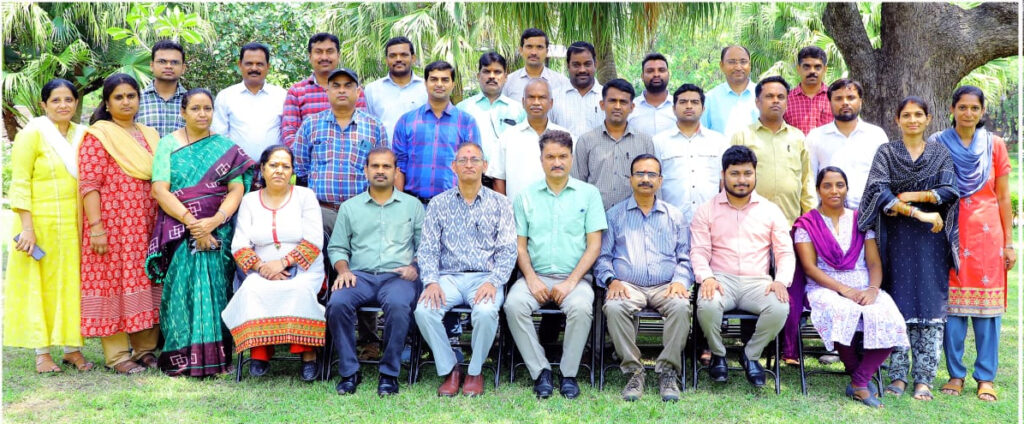
The Centre for Information Communication and Technology (CICT), NIRDPR conducted a training programme on procurement through the Government e-Marketplace (GeM) portal on 10th May 2024. The programme aimed to create awareness of the procurement and tendering processes and technical evaluation procedures.
Though the procurement in NIRDPR is centralised, the technical evaluation committee (TEC) was introduced recently and the evaluation process is being done online in GeM by TEC members. Accordingly, the primary objective of the programme was to create awareness among NIRDPR employees about the procurement process through GeM. This hands-on training programme mainly focused on the various latest procurement features available on GeM.
Dr. M. V. Ravibabu, Associate Professor& Head (i/c) CICT welcomed the participants. Introducing the programme, he explained how GeM created transparency, efficiency and speed in public procurement.
Shri M. Sundara Chinna, Data Processing Assistant gave an overview of the GeM. Narrating the story of its transformation from 2017, he briefed about various new procurement tools for e-bidding/reverse e-auction. Shri Upender Rana, System Analyst explained the procurement processes in accordance with the General Financial Rules (GFR).
Shri V. N. Karthik Krishna, LDC, gave a live demonstration on procuring items without creating an eBid, creating eBids for services and eBids for items having purchase value above Rs.5 lakh through the GeM portal. He also elaborated on various technical and financial evaluation features and functionalities available in the portal.
The training programme focused on several key features, including indenting the product, direct procurement procedure, BID procurement procedure, Reverse BID procurement procedure, CRAC report generation, and non-availability report generation.
The programme witnessed the participation of 48 participants in total. As per the feedback, the programme was successful in promoting digital governance and enhancing the efficiency of government procurement processes.
Shri Upender Rana, System Analyst and Shri M. Sundara Chinna, Data Processing Assistant, CICT, coordinated the programme.
Training Programme on Strategies for Formalisation of the Rural Informal Sector
Introduction
The informal sector occupies a significant space in a country’s economy, in terms of employment, income and livelihood support. But a large part of this sector operates outside the ambit of formal institutions. Its contribution is not adequately recognised or measured, and hence remains unregulated. More than half of the global workforce operates in the informal sector, and in some African countries, such as Tanzania and Zambia, up to 90 per cent of jobs are informal (ILO, 2009). In certain Sub-Saharan African nations, the informal sector economy accounts for up to 38 per cent of GDP, and its scope is rising across the board. The informal sector is not a residual of the formal economy, and should thus be seen as a fundamental component of the overall economy.
“The informal sector may be broadly characterised as consisting of units engaged in the production of goods or services with the primary objective of generating employment and incomes for the persons concerned. These units typically operate at a low level of organisation, with little or no division between labour and capital as factors of production and on a small scale. Labour relations – where they exist – are based mostly on casual employment, kinship or personal and social relations rather than contractual arrangements with formal guarantees.”
Measuring the Non-Observed Economy: A Handbook (Organization for Economic Cooperation and Development, 2002)
Background of Training
To gain a better and updated understanding of the challenges faced by the rural informal sector and foster its formalisation, the Centre for Agrarian Studies and Centre for Entrepreneurship Development and Financial Inclusion, NIRDPR, Hyderabad, conducted a comprehensive training programme titled ‘Strategies for Formalisation of the Rural Informal Sector’ was conducted from 22nd to 26th May 2023. Dr. Surjit Vikraman, Associate Prof & Head, CAS and Dr. Partha Pratim Sahu Associate Prof & Head, CEDFI coordinated the programme.
The training aimed to equip participants with the necessary knowledge and strategies to navigate from informal to formal enterprises. Various sessions, including contemporary challenges, skilling, GST and its implications for the informal sector, financial inclusion, and aggregation models, which offered valuable insights and practical solutions, were organised. The five-day training programme was conducted on a participatory and engaging platform. Efforts were made for a better understanding of the formalisation and its benefit for the informal sector in the field of jobs in rural areas, particularly among informal workers and with a focus on women. Many important issues were taken up for discussion such as identifying local opportunities, linking up with dynamic value chains, and formal institutions, and designing relevant training and capacity development programmes to help the informal sector navigate to formal set-up.
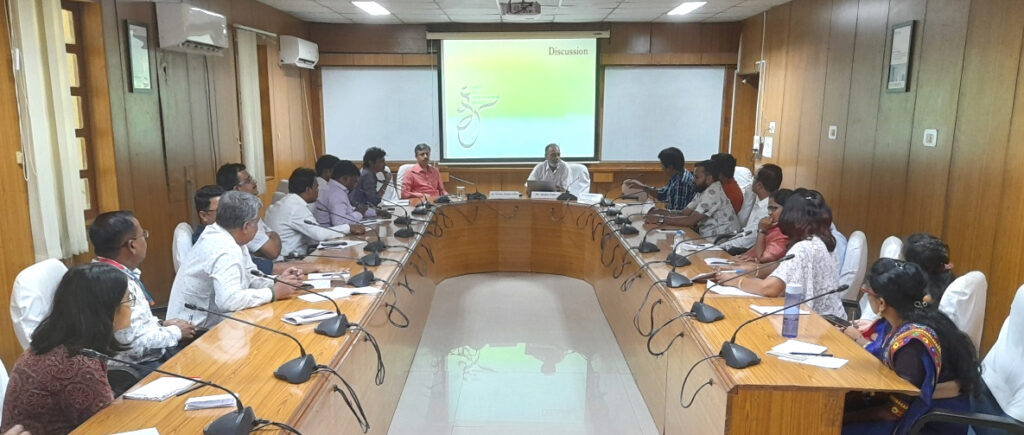
The training commenced with an exploration of the contemporary challenges encountered by the informal sector. Participants gained a deeper understanding of the informal sector, and the nature and characteristics of informal enterprises while identifying the hurdles impeding their formalisation. Through thought-provoking discussions, the social and economic impact of bringing the informal sector into the formal economy was emphasised by highlighting the need for concerted efforts in this direction. The role of skilling in the formalisation process emerged as a key focus area during the training. Participants recognised the significance of skill development in enhancing productivity, improving quality standards, and fostering sustainable growth.
A crucial aspect of the training centred around the implications of the Goods and Services Tax (GST) on the informal sector. Participants engaged in discussions, exploring the strategies and mechanisms to facilitate GST compliance among informal sector enterprises. Financial inclusion emerged as another vital component of the training, underscoring the importance of extending formal financial services to informal sector enterprises. Strategies to improve access to formal financial institutions were explored, aiming to foster financial literacy and empower entrepreneurs with the tools necessary for economic progress. There was also a dedicated session on the aggregation model, with a specific focus on Farmer Producer Organisations (FPOs). Participants learned about the power of collective action and the impact of aggregation on formalising small and marginal farmers. Case studies were showcased on successful FPO models, highlighting the transformative effects they can have on the agricultural sector and overall rural livelihoods.
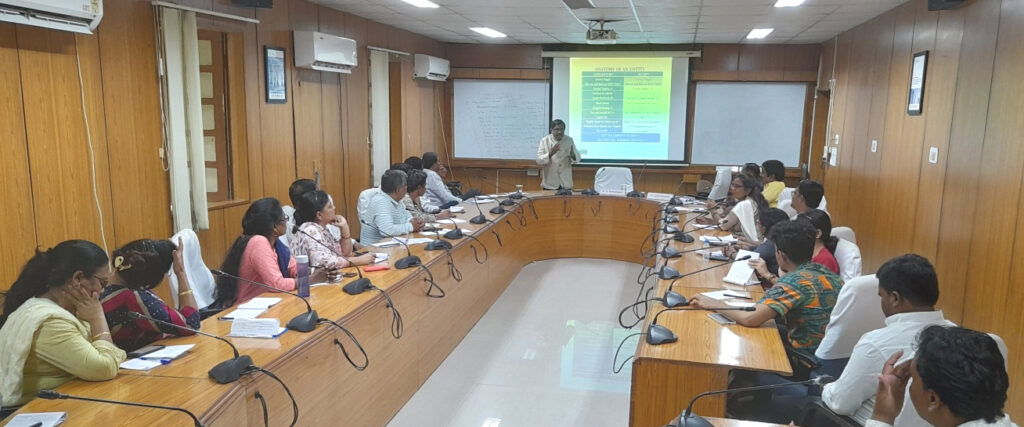
Dr. N. Ramalingam from Gulati Institute of Finance and Taxation, Thiruvananthapuram, Kerala taking a session on GST
To augment the practical understanding of the concepts discussed, field visits were organised. Participants had the opportunity to explore the Rural Technology Park, witnessing the first-hand integration of technology-driven solutions into the informal sector. Further, the session on ‘Promoting Entrepreneurship as a strategy case: a case of Rural Technology Park’ provided valuable insights into the potential of technology in supporting the formalisation process. Additionally, a visit to Tata Strive, a renowned skill development centre, allowed participants to observe innovative skilling practices that can be adapted to the informal sector, inspiring them to explore new avenues for capacity building.
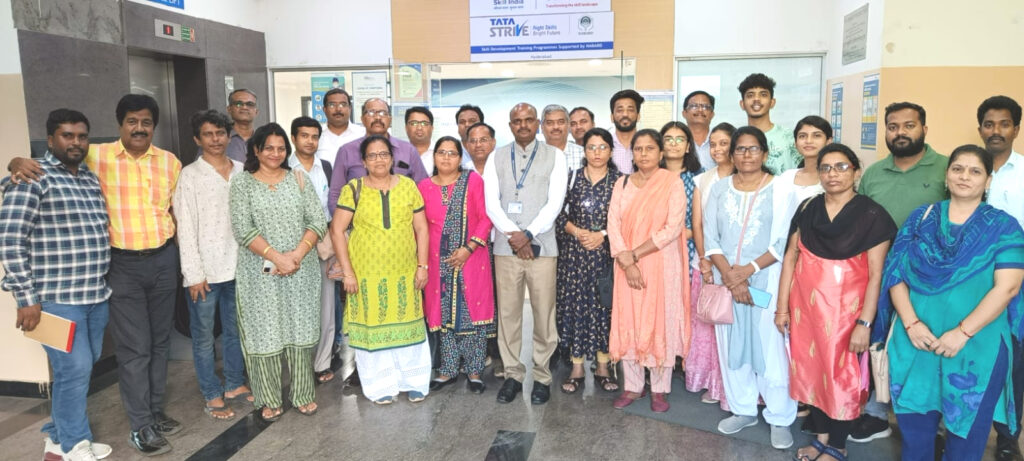
To assess the impact of the training, pre and post-skilling tests were administered. These assessments gauged the participants’ knowledge and understanding of formalisation strategies before and after the training. The results not only provided valuable feedback on individual learning outcomes but also highlighted the effectiveness of the training programme in enhancing participants’’ understanding and proficiency.
The training on ‘Strategies of Formalisation of the Informal Sector’ proved to be a transformative experience for the participants. The sessions, supplemented by field visits and assessments, equipped them with a holistic understanding of the challenges and opportunities associated with formalising the informal sector. Armed with newfound knowledge and strategies, participants left the training empowered to drive change and contribute to the sustainable growth of informal enterprises. By bridging the gap between the informal and formal economies, the training paved the way for a more inclusive and resilient economic landscape. It emphasised the critical role of capacity building, skilling, and supportive policies in empowering enterprises and fostering sustainable growth. Through collaborative efforts and a shared commitment to the formalisation of the informal sector, participants and stakeholders can collectively work towards creating an enabling environment that promotes entrepreneurship, empowers workers, and contributes to the overall economic development of the country. As the training concluded, participants expressed their gratitude for the valuable insights, practical knowledge, and networking opportunities they gained during the program. The training provided participants with the necessary tools, knowledge, and inspiration to navigate the complexities of formalisation.
(Prepared by participants of the training programme Mr. Sandeep Yadav, a PhD Scholar from TISS, and Ms. Shaktee, a Young Professional from Gujarat SRLM, with inputs from Dr. Surjit Vikraman and Dr. Partha Pratim Sahu.)
ToT on Capacity Building programme on e-GramSwaraj Portal for PRI Functionaries at IMPARD, Jammu
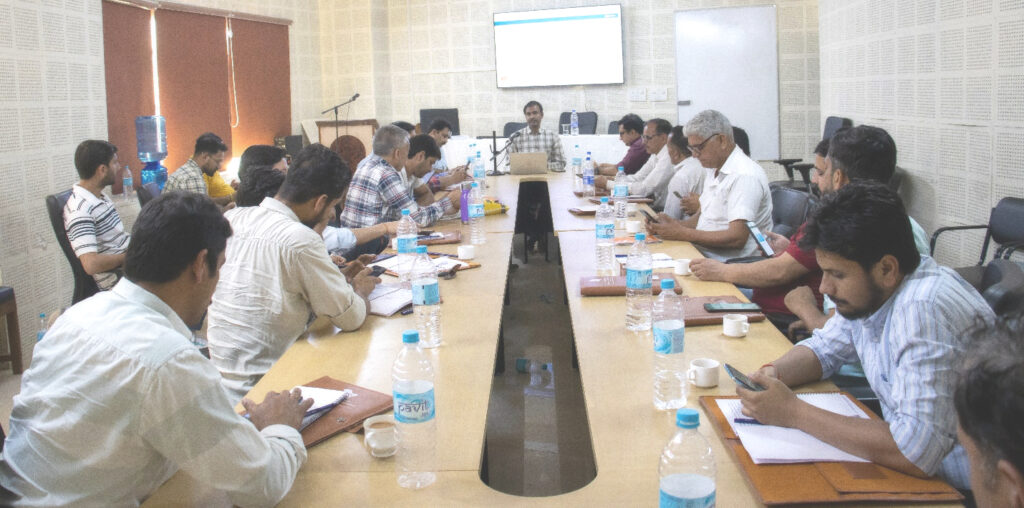
Shri K. Rajeshwar, Assistant Professor, NIRDPR handling a hands-on session on uploading GPDP using smartphones
The Centre for Good Governance and Policy Analysis (CGGPA), NIRDPR organised an off-campus ToT on ‘Capacity Building programme on e-GramSwaraj Portal for PRI Functionaries’ from 16th – 19th May 2023 at J&K Institute of Management, Public Administration and Rural Development (IMPARD). A total of 27 PRI functionaries participated in this programme sponsored by the Ministry of Panchayati Raj, Government of India.
The programme aimed to build skills and knowledge on the latest developments of e-GramSwaraj Portal by focussing deeply on the technical issues and challenges in all modules of the portal. The programme was inaugurated by Dr. Reva Sharma, Director (Trgs.), IMPARD, who highlighted the importance of uploading Gram Panchayat Development Plan in the GPDP and eGramSwaraj portals. She also elaborated on the latest developments in preparing the GPDP with a special focus on rolling out SDGs and including themes in the planning of Gram Panchayat activities.
Shri K. Rajeshwar, Assistant Professor, Centre for Good Governance & Policy Analysis & Programme Director welcomed the participants and briefed the objectives of the training programme.
The ToT covered sessions on the Panchayat profile, planning module integration with Sankalpa Siddi in the vibrant Gram Sabha, progress and financial reporting by highlighting the significance of PFMS on 15th Finance Commission grants and Gram Manchitra with a focus on Planning. All the sessions were demonstrated in the demo portal.
The training methods of the course were delivered through a participatory learning process. The sessions were dynamic and included introductory presentations, interactive sessions, lectures, documentary presentations, practical exercises, and brainstorming and hands-on sessions.
The programme was well appreciated by all the participants. The feedback of the participants was taken in Training Management Portal and the overall rating was 92 per cent. The participants opined that they were impressed with the programme design, contents, programme deliveries and hospitality arrangements.
Shri K. Rajeshwar, Assistant Professor, CGGPA, NIRDPR coordinated the training programme.
Refresher Training Programme on e-Office for NIRDPR Employees
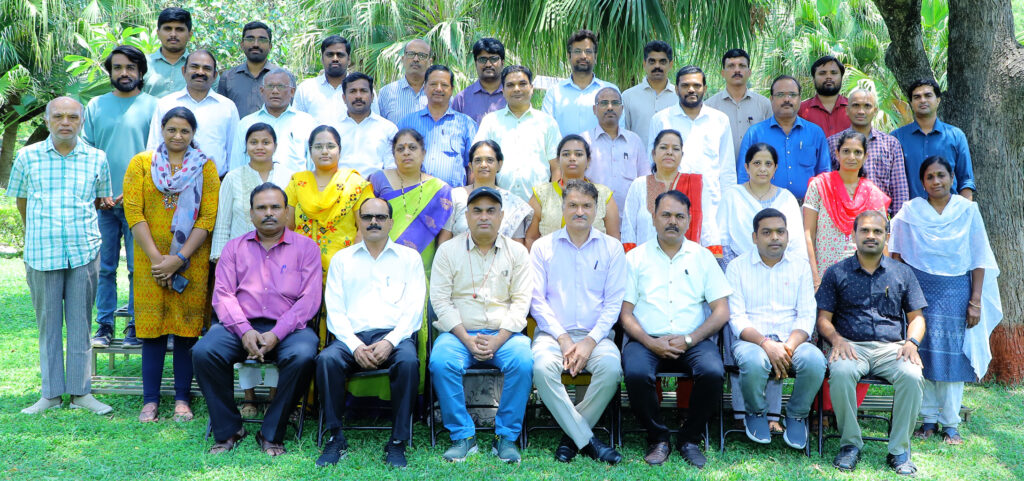
The Centre for Information Communication and Technology (CICT), NIRDPR conducted a Refresher Training Programme on e-Office on 24th May 2024. The programme aimed to address the skill gaps among e-Office users and provide them with the necessary knowledge and skills for efficient software utilisation. It focused on various key features and practical aspects of e-Office governance.
The programme commenced with a welcome address by Dr. Ravindra S. Gavali, Professor & School Head, who set a positive tone for the day’s proceedings. Dr. M. V. Ravibabu, Associate Professor & Head (i/c) CICT, introduced the programme, emphasising its significance in bridging the skill gaps among e-Office users. Dr. C Kathiresan, Associate Professor, spoke about addressing the practical aspects and offered a comprehensive understanding of effective e-Office utilisation.
Er. Dharmendra Singh, Computer Programming Associate, provided an overview of the basic functions of e-Office and an understanding of the software’s capabilities. Shri G. Praveen, Data Processing Assistant, conducted a live demonstration, elaborating on various features and functionalities of e-Office. The interactive sessions throughout the programme were handled by Er. Dharmendra Singh, Shri G. Praveen, and Shri Upender Rana, System Analyst, by addressing the queries raised by the participants and clarifying their doubts. Er. Sundara Chinna and Shri Sunil K. Jha assisted in the conduct of the programme that witnessed the active involvement of 31 offline and 21 online participants.
The training programme covered several key features of e-Office, including Receipt handling, Differentiating between the ‘Put in a file’ and ‘attach file’ functions, Attachment of correspondence, File handling, File creation (SFS/Non-SFS), Use of green and yellow note sheets, Draft handling, Discussion on frequent day-to-day issues, utilisation of DSC (Digital Signature Certificate) in e-Office, Difference between linking and attachments, Knowledge Management System (KMS) utilisation, and e-Office MIS Reports. These topics were thoroughly covered to ensure that the participants gained practical knowledge and skills to enhance their e-Office usage.
As per the feedback, the participants found the refresher training programme highly effective in promoting digital governance and enhancing the efficiency of government processes. The interactive sessions and live demonstrations facilitated constructive learning and equipped the participants with the expertise to use e-Office efficiently in their respective departments.
Er. Dharmendra Singh, Computer Programming Associate, and Shri Upender Rana, System Analyst, coordinated the training programme.
